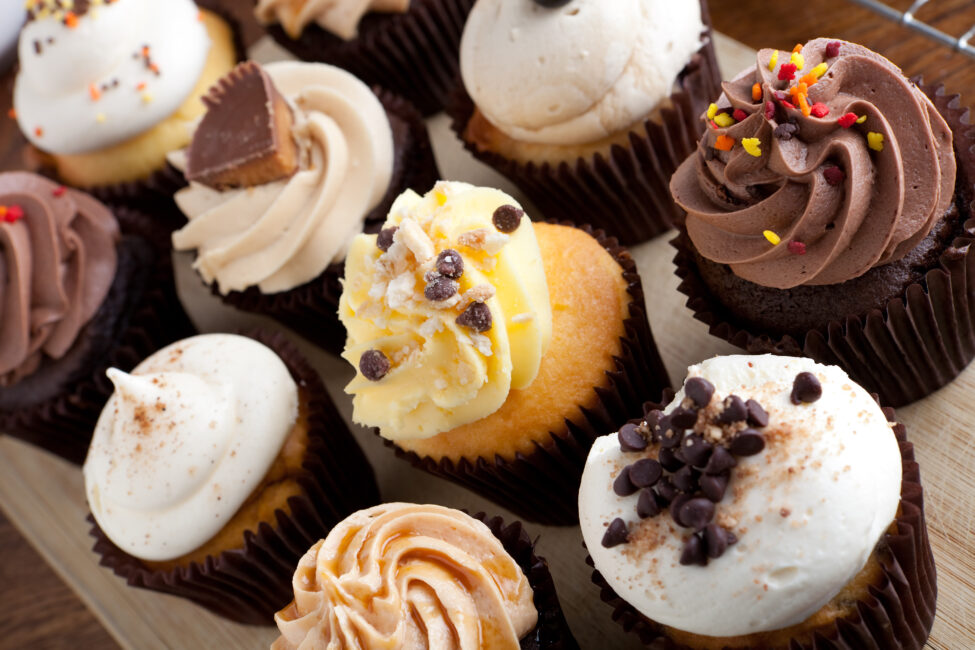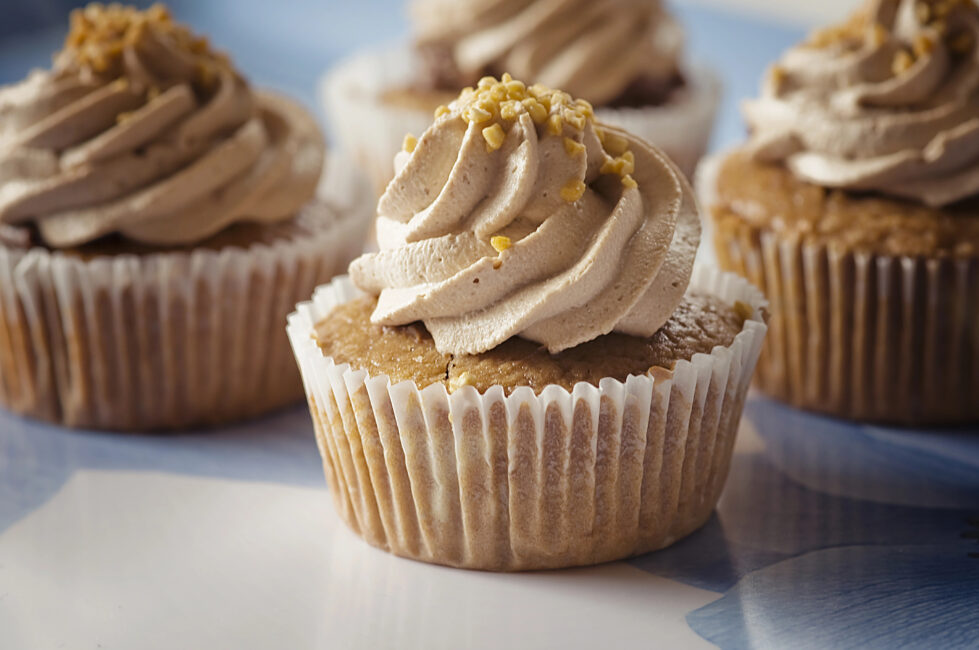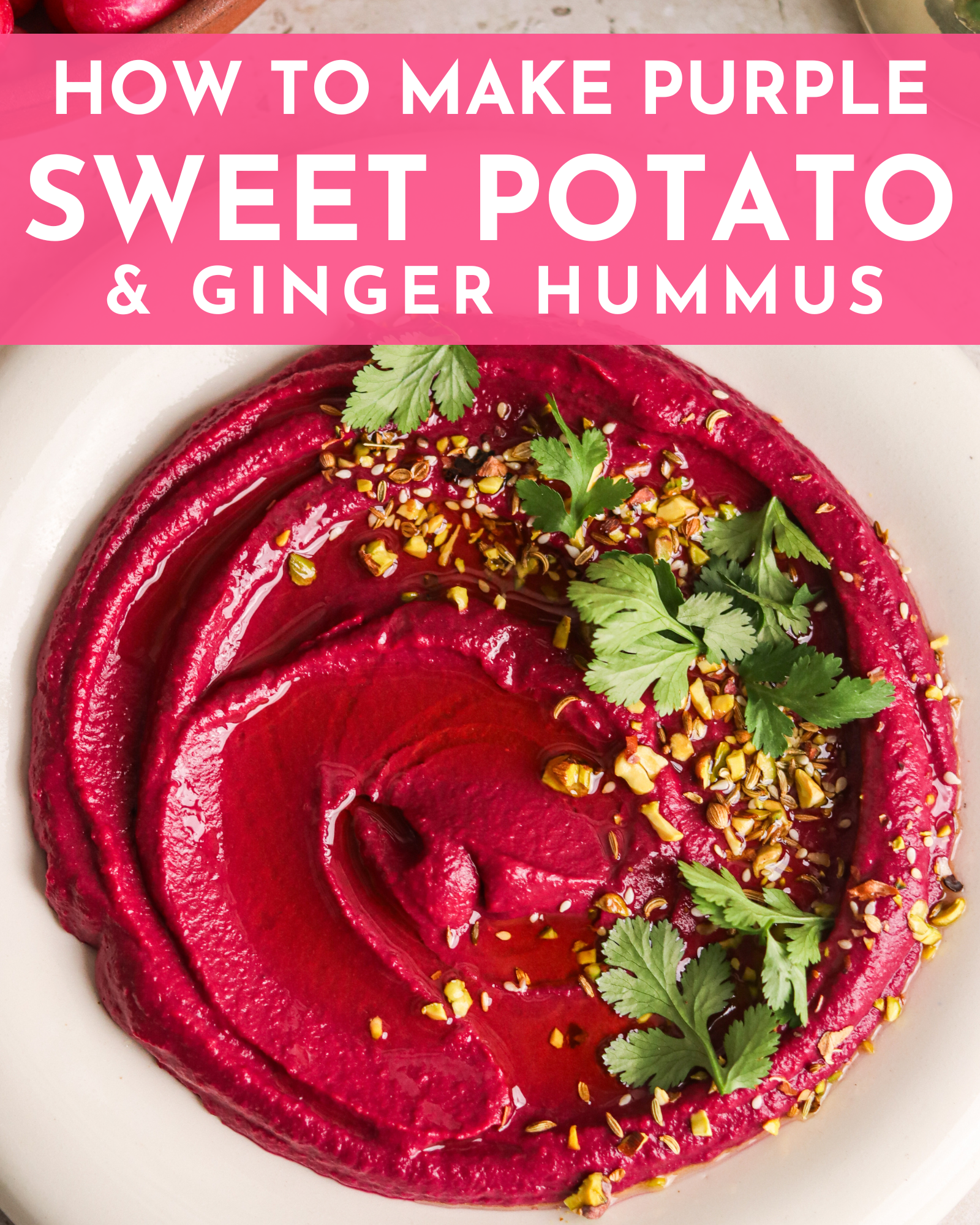This post may contain affiliate links. Please read our
disclosure policy
for more information.
Got a batch of cupcakes and you’re not sure whether or not to fridge them? Are cupcakes like a loaf of bread, where you just… leave them on the counter? Orrr… will they go stale or spoil faster?
Whether it’s homemade cupcakes or store-bought cupcakes, you’re left with quite the conundrum: Can these sweet treats be stored in the fridge without compromising their quality? That’s why we’re diving into the art of cupcake storage, so you can enjoy those puffy little delights for as long as possible, and in their freshest state.

The Great Fridge Debate
Can you put cupcakes in the fridge? Yes, BUT… there are stipulations.You might think refrigerating cupcakes in an airtight container will preserve them, but it’s not always your best option.
Your fridge can draw moisture from fresh cupcakes, leaving you with the husk of a dried-out pastry. While cupcakes with cream cheese frosting or whipped cream on top—essentially any cupcake that contains dairy—HAVE to be cooled in order to prevent them from spoiling.
It’s confusing, I know. But we’re here to cover all the nuances to keeping your cupcakes the cup-cakiest.
Cupcake Storage 101
We can all agree on one thing: Cupcakes are just plain fun. Whether you’re baking them or eating them, they’re their own little puffy parties in a paper sleeve. And proper storage is the best way to keep that party going, whether you have fresh homemade cupcakes or store-bought leftover cupcakes. Here’s how to extend the life of this particular party.
At Room Temperature: The Ideal Environment for Unfrosted Cupcakes
- Cool & Dry: For the best results, leave your unfrosted cupcakes in cool, dry environments. Storing them at room temperature for a couple of days preserves both the softness of their outside, and the moistness of their inside. This works especially well for plain cupcakes or those without perishable fillings.
- Airtight: The secret of room temp storage is to keep them in an airtight container. This will shield your cupcakes from air exposure,and keep them from drying out. It also keeps them from absorbing any external odors, and maintains their fresh taste.
- Give Them Room: Cupcakes may look cute, but they can be divas, and one thing is for sure: they don’t like crowding. Get a big enough container so that these little love puffs don’t have to touch each other. The air circulation helps prevent moisture from building up around them, which can lead to soggy bottoms or sticky tops. If you’re storing a large batch, you should consider using multiple containers or layering them with sheets of parchment paper to let them all be their own star.
The Different Types of Cupcakes
Understanding the types of cupcakes you’re dealing with can help you determine what the best storage method is for each.
- Plain Cupcakes: These do best at room temperature, and can stay fresh in an airtight container for a couple of days.
- Frosted Cupcakes: Depending on the type of frosting, they may need refrigeration. For example, classic buttercream frosting is fine at room temperature, but cream cheese frosting requires a cooler environment.
- Cupcakes with Perishable Fillings: Any cupcake that’s filled with fresh fruit, custard, or dairy products should definitely be refrigerated to prevent spoilage.

Refrigerating Cupcakes
For cupcakes that DO need to be refrigerated, you’ll want to keep them in a container to maintain their freshness and keep them from absorbing odors. Ideally, you should enjoy them within 3-4 days and bring them back to room temperature before serving to get the most out of their taste and texture.
Cupcakes in the Freezer?: The Friendship You Never Expected
Surprisingly, freezing your cupcakes is the best way to extend their shelf life beyond just a couple of days. Who knew?
- It Works Best with Unfrosted Cupcakes: Wrap each cupcake in a layer of plastic wrap and aluminum foil to protect them against freezer burn, then place them in a freezer bag or storage container. They’ll keep their quality for up to three months.
- Defrosting & Refrosting: Let your cupcakes to come back to room temp on a wire rack, and then add a frosting layer when you are ready.

Decorated Cupcakes: To Freeze or Not To Freeze?
Frosted cupcakes can be frozen. The order of which you do things will be just a little different. Stick those cupcakes in the freezer on their own for just a few hours, THEN wrap them in Saran wrap and aluminum foil, and place them in a freezer bag or container. This will solidify the frosting just enough to keep it from being smushed by the wrapping process, while also keeping them from becoming freezer burned.
The thawing process is the same. Bring to room temp before serving to enjoy them at their prime.
Tips for Maximizing Freshness
- Cool Completely: Always allow warm cupcakes to cool on a wire rack before refrigerating or freezing to prevent condensation, which can lead to soggy bottoms and sticky tops.
- Proper Wrapping: When freezing, wrapping your cupcakes correctly is important business. Use a layer of plastic wrap FIRST, followed by aluminum foil.
- Avoid Cross-Contamination: Store your cupcakes away from strong-smelling foods in the fridge or freezer to maintain their original taste.

How To Know When Cupcakes Have Gone Bad
Like all baked goods, cupcakes have an end to their shelf life, and knowing when their time is up is important way to prevent your exposure to foodborne illness. Here’s how to tell if your cupcakes have turned to the dark side:
On the Counter
Cupcakes left on the counter are usually safe to eat for a couple of days, if stored properly in an airtight container. Here are signs that your countertop cupcakes have gone bad:
- Stale Taste and Hard Texture: The freshness has faded, and the cupcakes have begun to dry out. They’re hard and unpleasant to eat.
- Mold Growth: Check for any signs of mold, especially if the cupcakes were stored in a humid environment. Mold can appear as fuzzy spots and comes in a variety of colors.
- Off Smell: A unusual or sour odor is a BIG indication that the cupcakes should not be consumed.
In the Fridge
Refrigerated cupcakes can last 3-4 days if stored correctly. However, the cool environment can also mask signs of spoilage, so be very aware:
- Mold Growth: Just as you would with countertop cupcakes, check for any signs of mold. Refrigeration can slow down mold growth, but it won’t prevent it completely.
- Drying Out: While not necessarily a sign of spoilage, cupcakes that have become excessively dry may not be fun to eat.
- Frosting Separation or Discoloration: Is the frosting starting to separate, weep, or change color? This may indicate spoilage, especially if the frosting contains dairy or fresh fruit.
In the Freezer
Cupcakes can be frozen for up to three months. Freezer burn and ice crystals are common issues but don’t necessarily mean the cupcake is unsafe to eat, though the quality may not be the best. Signs of spoilage in frozen cupcakes include:
- Freezer Burn: While typically not a health risk, freezer burn will affect the texture and taste of your cupcakes. It usually appears as dry, leathery patches on the surface.
- Odd Smells: If your cupcakes start to smell like other food in your freezer or have an off smell once thawed, they may have absorbed some odors, which can affect their taste.
- Change in Texture: If your cupcakes feel overly soggy or mushy after thawing, they might not be at peak quality. This tends to happen when they’re not properly wrapped or if moisture got into the packaging.

General Tips for Ensuring Freshness
- Proper Storage: Always store your cupcakes in an airtight containers to protect them from air and moisture, whether you store them counterside, in the fridge, or in the freezer.
- Label and Date: Keep track of when you stored your cupcakes by labeling them with the date. This way, you’ll know exactly how long you have to enjoy them.
- Trust Your Senses: Your senses are often your best tool for knowing if food has gone bad. When in doubt, throw it out!
FAQs
How long can I keep my cupcakes in the fridge?
3-4 days, as long as they are kept in an airtight container. Bring them to room temperature before serving to get the most out of them.
Can I store frosted cupcakes at room temperature?
Sure, but only for up to 2-3 days, and only if they don’t contain fruit or dairy frosting or filling. Make sure to keep them in an airtight container to prevent them from drying out.
What’s the best way to thaw frozen cupcakes?
Let frozen cupcakes thaw on a wire rack at room temperature. This will help them keep their moisture without becoming soggy.
Can I refrigerate cupcakes with whipped cream frosting?
You will definitely want to keep whipped cream-frosted cupcakes in the fridge, also in an airtight container.
How do I prevent cupcakes from drying out in the fridge?
Make sure they’re in a sealed container with a tight-fitting lid. You can also add a layer of plastic wrap inside the container as an extra barrier.
Can I freeze cupcakes with fondant decorations?
It’s best to freeze cupcakes without decorations and then add fondant AFTER they’ve been thawed and are at room temp. Otherwise, the fondant might trigger condensation once thawed, and you’ll end up with soggy cupcakes.

What’s Your Favorite Cupcake?
Frosted? Unfrosted? Filled? Chocolate? Buttercream? Tell us your favorite cupcake types and share any recipes or tips you might have! We’ve love to hear from you in the comments.
Some Great Cupcake Recipes
This post may contain affiliate links. Please read our
disclosure policy
for more information.
This post may contain affiliate links. Please read our
disclosure policy
for more information.
Got a batch of cupcakes and you’re not sure whether or not to fridge them? Are cupcakes like a loaf of bread, where you just… leave them on the counter? Orrr… will they go stale or spoil faster?
Whether it’s homemade cupcakes or store-bought cupcakes, you’re left with quite the conundrum: Can these sweet treats be stored in the fridge without compromising their quality? That’s why we’re diving into the art of cupcake storage, so you can enjoy those puffy little delights for as long as possible, and in their freshest state.

The Great Fridge Debate
Can you put cupcakes in the fridge? Yes, BUT… there are stipulations.You might think refrigerating cupcakes in an airtight container will preserve them, but it’s not always your best option.
Your fridge can draw moisture from fresh cupcakes, leaving you with the husk of a dried-out pastry. While cupcakes with cream cheese frosting or whipped cream on top—essentially any cupcake that contains dairy—HAVE to be cooled in order to prevent them from spoiling.
It’s confusing, I know. But we’re here to cover all the nuances to keeping your cupcakes the cup-cakiest.
Cupcake Storage 101
We can all agree on one thing: Cupcakes are just plain fun. Whether you’re baking them or eating them, they’re their own little puffy parties in a paper sleeve. And proper storage is the best way to keep that party going, whether you have fresh homemade cupcakes or store-bought leftover cupcakes. Here’s how to extend the life of this particular party.
At Room Temperature: The Ideal Environment for Unfrosted Cupcakes
- Cool & Dry: For the best results, leave your unfrosted cupcakes in cool, dry environments. Storing them at room temperature for a couple of days preserves both the softness of their outside, and the moistness of their inside. This works especially well for plain cupcakes or those without perishable fillings.
- Airtight: The secret of room temp storage is to keep them in an airtight container. This will shield your cupcakes from air exposure,and keep them from drying out. It also keeps them from absorbing any external odors, and maintains their fresh taste.
- Give Them Room: Cupcakes may look cute, but they can be divas, and one thing is for sure: they don’t like crowding. Get a big enough container so that these little love puffs don’t have to touch each other. The air circulation helps prevent moisture from building up around them, which can lead to soggy bottoms or sticky tops. If you’re storing a large batch, you should consider using multiple containers or layering them with sheets of parchment paper to let them all be their own star.
The Different Types of Cupcakes
Understanding the types of cupcakes you’re dealing with can help you determine what the best storage method is for each.
- Plain Cupcakes: These do best at room temperature, and can stay fresh in an airtight container for a couple of days.
- Frosted Cupcakes: Depending on the type of frosting, they may need refrigeration. For example, classic buttercream frosting is fine at room temperature, but cream cheese frosting requires a cooler environment.
- Cupcakes with Perishable Fillings: Any cupcake that’s filled with fresh fruit, custard, or dairy products should definitely be refrigerated to prevent spoilage.

Refrigerating Cupcakes
For cupcakes that DO need to be refrigerated, you’ll want to keep them in a container to maintain their freshness and keep them from absorbing odors. Ideally, you should enjoy them within 3-4 days and bring them back to room temperature before serving to get the most out of their taste and texture.
Cupcakes in the Freezer?: The Friendship You Never Expected
Surprisingly, freezing your cupcakes is the best way to extend their shelf life beyond just a couple of days. Who knew?
- It Works Best with Unfrosted Cupcakes: Wrap each cupcake in a layer of plastic wrap and aluminum foil to protect them against freezer burn, then place them in a freezer bag or storage container. They’ll keep their quality for up to three months.
- Defrosting & Refrosting: Let your cupcakes to come back to room temp on a wire rack, and then add a frosting layer when you are ready.

Decorated Cupcakes: To Freeze or Not To Freeze?
Frosted cupcakes can be frozen. The order of which you do things will be just a little different. Stick those cupcakes in the freezer on their own for just a few hours, THEN wrap them in Saran wrap and aluminum foil, and place them in a freezer bag or container. This will solidify the frosting just enough to keep it from being smushed by the wrapping process, while also keeping them from becoming freezer burned.
The thawing process is the same. Bring to room temp before serving to enjoy them at their prime.
Tips for Maximizing Freshness
- Cool Completely: Always allow warm cupcakes to cool on a wire rack before refrigerating or freezing to prevent condensation, which can lead to soggy bottoms and sticky tops.
- Proper Wrapping: When freezing, wrapping your cupcakes correctly is important business. Use a layer of plastic wrap FIRST, followed by aluminum foil.
- Avoid Cross-Contamination: Store your cupcakes away from strong-smelling foods in the fridge or freezer to maintain their original taste.

How To Know When Cupcakes Have Gone Bad
Like all baked goods, cupcakes have an end to their shelf life, and knowing when their time is up is important way to prevent your exposure to foodborne illness. Here’s how to tell if your cupcakes have turned to the dark side:
On the Counter
Cupcakes left on the counter are usually safe to eat for a couple of days, if stored properly in an airtight container. Here are signs that your countertop cupcakes have gone bad:
- Stale Taste and Hard Texture: The freshness has faded, and the cupcakes have begun to dry out. They’re hard and unpleasant to eat.
- Mold Growth: Check for any signs of mold, especially if the cupcakes were stored in a humid environment. Mold can appear as fuzzy spots and comes in a variety of colors.
- Off Smell: A unusual or sour odor is a BIG indication that the cupcakes should not be consumed.
In the Fridge
Refrigerated cupcakes can last 3-4 days if stored correctly. However, the cool environment can also mask signs of spoilage, so be very aware:
- Mold Growth: Just as you would with countertop cupcakes, check for any signs of mold. Refrigeration can slow down mold growth, but it won’t prevent it completely.
- Drying Out: While not necessarily a sign of spoilage, cupcakes that have become excessively dry may not be fun to eat.
- Frosting Separation or Discoloration: Is the frosting starting to separate, weep, or change color? This may indicate spoilage, especially if the frosting contains dairy or fresh fruit.
In the Freezer
Cupcakes can be frozen for up to three months. Freezer burn and ice crystals are common issues but don’t necessarily mean the cupcake is unsafe to eat, though the quality may not be the best. Signs of spoilage in frozen cupcakes include:
- Freezer Burn: While typically not a health risk, freezer burn will affect the texture and taste of your cupcakes. It usually appears as dry, leathery patches on the surface.
- Odd Smells: If your cupcakes start to smell like other food in your freezer or have an off smell once thawed, they may have absorbed some odors, which can affect their taste.
- Change in Texture: If your cupcakes feel overly soggy or mushy after thawing, they might not be at peak quality. This tends to happen when they’re not properly wrapped or if moisture got into the packaging.

General Tips for Ensuring Freshness
- Proper Storage: Always store your cupcakes in an airtight containers to protect them from air and moisture, whether you store them counterside, in the fridge, or in the freezer.
- Label and Date: Keep track of when you stored your cupcakes by labeling them with the date. This way, you’ll know exactly how long you have to enjoy them.
- Trust Your Senses: Your senses are often your best tool for knowing if food has gone bad. When in doubt, throw it out!
FAQs
How long can I keep my cupcakes in the fridge?
3-4 days, as long as they are kept in an airtight container. Bring them to room temperature before serving to get the most out of them.
Can I store frosted cupcakes at room temperature?
Sure, but only for up to 2-3 days, and only if they don’t contain fruit or dairy frosting or filling. Make sure to keep them in an airtight container to prevent them from drying out.
What’s the best way to thaw frozen cupcakes?
Let frozen cupcakes thaw on a wire rack at room temperature. This will help them keep their moisture without becoming soggy.
Can I refrigerate cupcakes with whipped cream frosting?
You will definitely want to keep whipped cream-frosted cupcakes in the fridge, also in an airtight container.
How do I prevent cupcakes from drying out in the fridge?
Make sure they’re in a sealed container with a tight-fitting lid. You can also add a layer of plastic wrap inside the container as an extra barrier.
Can I freeze cupcakes with fondant decorations?
It’s best to freeze cupcakes without decorations and then add fondant AFTER they’ve been thawed and are at room temp. Otherwise, the fondant might trigger condensation once thawed, and you’ll end up with soggy cupcakes.

What’s Your Favorite Cupcake?
Frosted? Unfrosted? Filled? Chocolate? Buttercream? Tell us your favorite cupcake types and share any recipes or tips you might have! We’ve love to hear from you in the comments.
Some Great Cupcake Recipes
This post may contain affiliate links. Please read our
disclosure policy
for more information.










